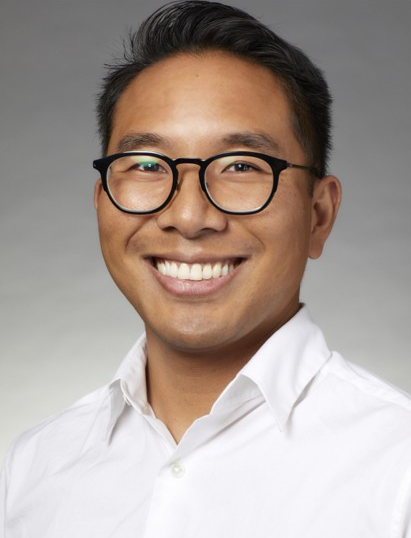A PATH TO A VACCINE
Alumnus Andrei Tadique heads the development of scaling up promising COVID-19 vaccine candidates
by Emily Payne
As the saying goes, Rome wasn’t built in a day — and neither are vaccines. Something Andrei Tadique (S 2007) knows well.
As a 13-year pharmaceutical and medical device industry veteran, Tadique has developed numerous vaccines and over-the-counter drugs, engineered manufacturing facilities and brought leading medical devices to market.
And now as a senior manager at Emergent BioSolutions, Tadique is in the midst of possibly the most important work of his career — he’s leading a team working on the manufacture of hundreds of millions of doses for four potential COVID-19 vaccines.
The efforts are part of Operation Warp Speed (OWS), a directive to deliver 300 million doses of a safe, effective vaccine by January 2021.
Headed by the Department of Health and Human Services (HHS), OWS has partnered with private companies and other federal agencies to invest in the development, clinical testing, manufacturing and distribution of promising COVID-19 vaccine candidates.
As one of three HHS-designated Centers for Innovation in Advanced Development and Manufacturing, Emergent BioSolutions has partnered with Johnson & Johnson, AstraZeneca, Novavax and Vaxart to scale up and manufacture their vaccines. These centers were established in 2012 by HHS to develop and manufacture medical countermeasures in the face of public health emergencies.
As the number of confirmed COVID-19 cases continues to climb both in the United States and worldwide, there’s no doubt that creating a vaccine is imperative.
But to do that, a process that would normally take upwards of a decade must be greatly accelerated.
“Typically, a pharmaceutical company would develop a vaccine, do years of clinical trials and then finally invest in manufacturing and distributing a vaccine,” Tadique explained. Even then, he said, fewer than 10% of drugs that go through clinical trials are usually approved.
To speed things up, each step of the process — developing, testing and manufacturing — is happening simultaneously.
Sometimes working 12- to 14-hour days, Tadique spends his time speaking to scientists and engineers from each of the four companies. He wants to understand not only how to make their vaccines but how to transfer their technology from the lab bench to create a robust manufacturing platform to scale up the vaccines.
The endeavor is enormous but also remarkable.
“It’s a consortium of scientists and engineers all working together, collaborating to create something that has never been done before in the history of science,” he said.
At the same time, noted Tadique, this is high-stakes work. “You really have to pay attention to detail, understand each of these technologies and work hard to make sure that you designed it well enough that it’s safe and stands up to regulatory scrutiny,” he added.
Though challenging, Tadique finds inspiration from the Carnegie Mellon University mantra: My heart is in the work. “I want to do this job right because at the end of the day it’s going to be my family and people I know that are going to be affected by the product I create,” he said.
Tadique also credits the Mellon College of Science for training him to think like a scientist. In his sophomore and junior year, the biological sciences major had two internships in the vaccines and biologics research group at Merck, which kickstarted his career in pharmaceuticals. “I don’t think I would have gotten that opportunity had I not been at CMU,” he said.
Since his days at CMU, Tadique has dreamed of using science to help others.
“I’ve always wanted to do a job that has a huge impact on the world, and I’m really grateful to be a part of this experience,” he said.
And when the next big challenge arises? “I have no doubt that CMU is already helping prepare the next generation of scientists and engineers to tackle problems like this one.”
